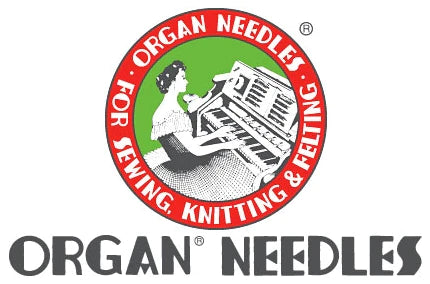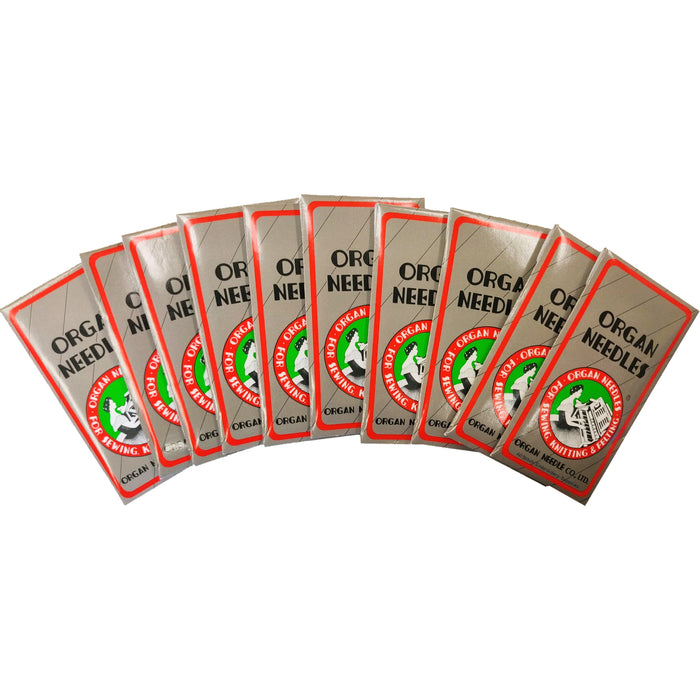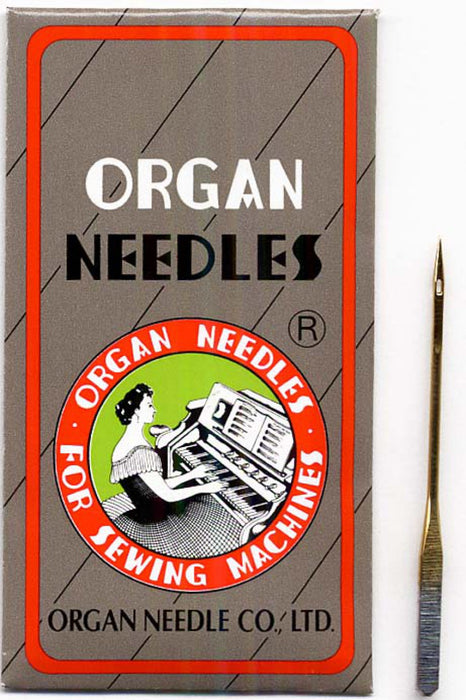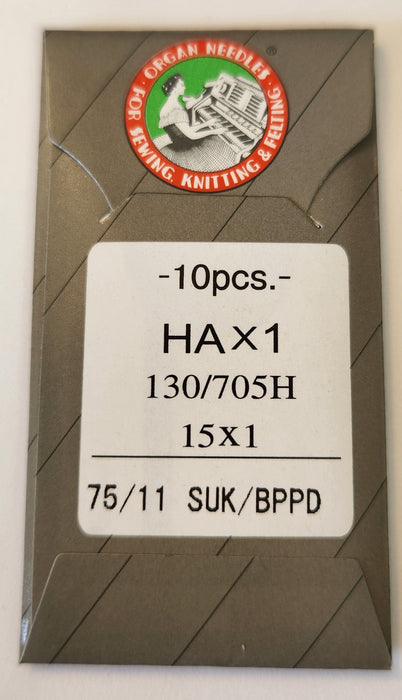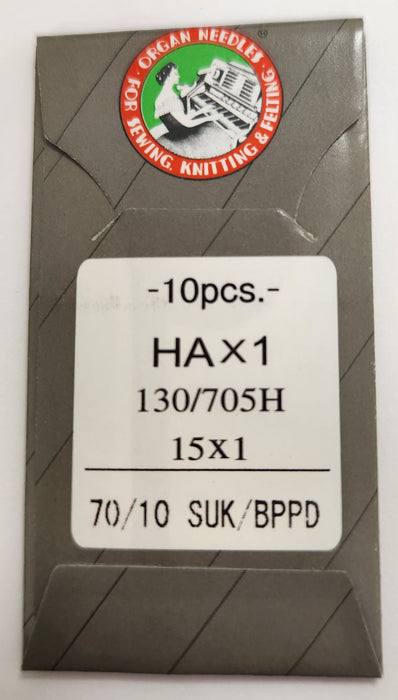
Organ 15x1BPPD | Flat-Sided Shank | Regular Eye | Ball Point | Home Embroidery, Sewing & Quilting Needle | Titanium | 100/bx
These are the standard ball point needle with a flat shank, a regular eye with a titanium coating. PD needles have a titanium-nitrate ceramic finish which makes them more wear resistant than any other needles. Use with most home sewing machines and home sewer based embroidery and quilting machines.
- Organ 15x1 - Home Embroidery, Sewing & Quilting Needle
- PD - Titanium Coated
- Flat-Sided Shank
- Regular Eye
- SUK/BP - Medium Ball Point
- 100 Needles Per Box
Ball point needle for general and domestic sewing. This needle is suitable for sewing suede, corduroy, organdy, batiste, linen, poplin, broadcloth, and others. Coated with Titanium Nitride for a longer needle life. The strength is increased by the high hardness, in combination with perfect durability and excellent anti-abrasion resistance.
Organ Flat Shank Home Embroidery Needle‚ For Single Needle Home Machines
HAx1 130/705H 15x1BP PD - Titanium Ball Point
100 Needles/Box (10 Packages of 10 Needles)
15x1 PD (Perfect Durability): HAx1, 705H This is the standard needle with a flat shank and a regular size eye for most home sewing machines and home sewer based embroidery and quilting machines. PD embroidery needles have a titanium-nitride ceramic finish which makes them more wear-resistant than any other needles. When embroidering large stitch patterns or penetrating very abrasive, dense or tough materials the needle points and surface will maintain its original shape and dimensions 3 to 5 times longer. PD embroidery needle points will not wear down as fast as chromium plated needle points. The use of PD embroidery machine needles gives you longer needle life, fewer defects due to "dulled" needle points, and increased productivity.
Ball Point: Ball point (BP) machine embroidery needles are designed to alleviate making holes in knit or loosely woven materials. The cross fibers which constitute the knit or loosely woven materials are relatively far apart as compared to those in tightly woven materials. When an embroidery needle with a standard "set" or "sharp" point encounters one of those fibers in penetrating the fabric, it cuts right through the fiber. This creates a hole in the fabric. The ball point needle pushes aside the fiber it encounters in penetration and thereby avoids making a damaging hole in the fabric. (It is also recommended to use the thinnest possible needle for a particular fabric


